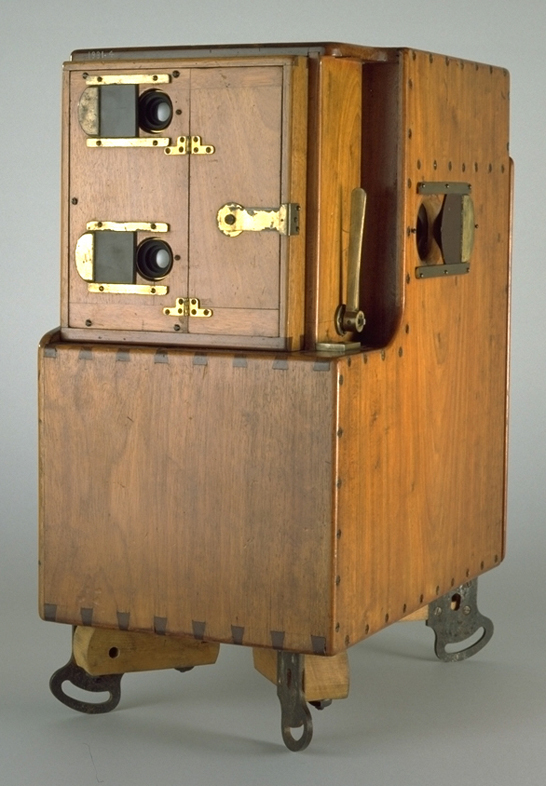The first film camera to be patented was by Louis Le Prince in 1888. It wasn’t until a few years later that film production began to establish itself, this marked the beginning of one of the biggest industries in the world. At the time technology was limited which meant that films were only around a minute long. During the 1890’s films could be seen through traveling exhibitors. These films generally consisted of one scene of everyday life, a sporting event, or even slapstick. The films were obviously black and white and had neither music nor dialogue.

Louis Le Prince Film Camera, Photo: National Media Museum
This style of film although simple was still a miraculous technology, leaving audience members in awe. As the years went on film gradually began to develop, but still stayed in the silent era until 1927. The silent film era presented films to audiences with live music from an in house orchestra or even just one organist. Many silent films included inter titles to provide narration for the audience members. However, we are getting ahead of ourselves. It’s easy to forget that film existed before the silent era because silent films became outdated very quickly.
It wasn’t until the end of the 19th century that film makers had to the ability to include more than one shot in each film. Many of these films consisted of lantern slides, live choral numbers, and even a lecture to stretch the time of each film, but this wasn’t considered continuous film making. Come Along, Do! is one of the first films that contained more than one scene, made in 1898 by Robert W. Paul.

Come Along, Do! Photo Credit: YouTube
In 1900 George Albert Smith and James Williamson successfully established continuity of action in film. In Smith’s film As Seen Through a Telescope you are able to see a man tying the shoelace of his girlfriend, all of this action is observed by an older man looking through a telescope. Williamson was able to create the same style of filming in his movie Attack on a China Mission Station.

As Seen Through a Telescope, Photo Credit: Mubi
George Albert Smith has also been credited for pioneering the use of close up shots. In addition to these miraculous advances in film technology his film style established the basics of narrative that became known as “film grammar.”

